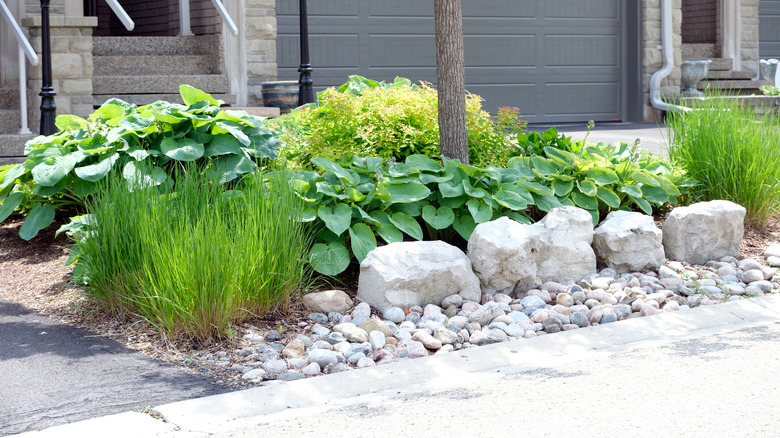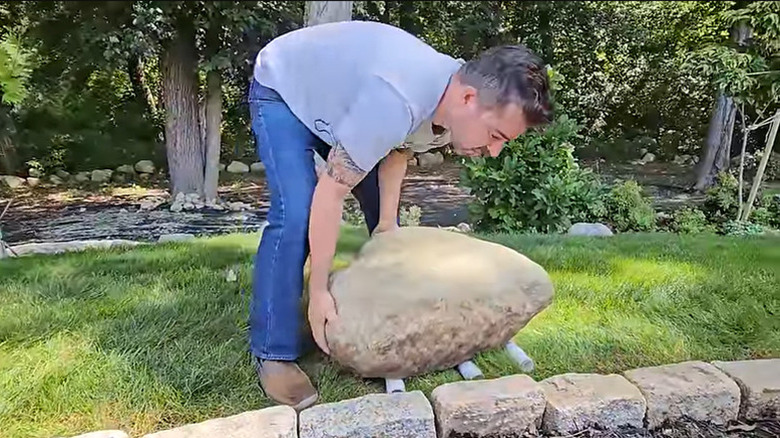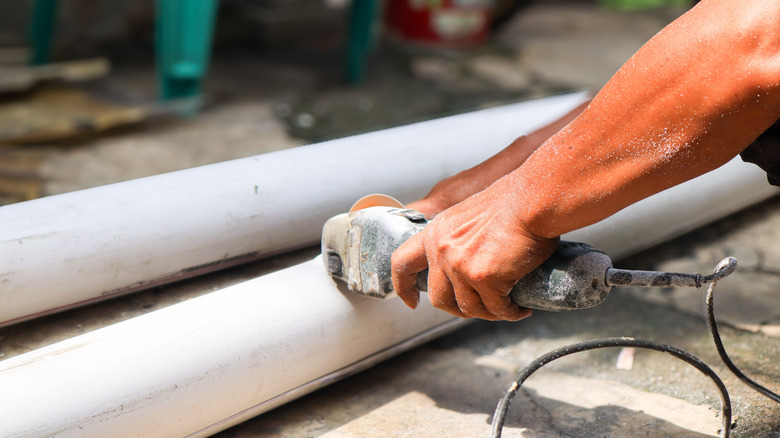Save Money & Back Pain Moving Landscaping Rocks With A Simple Solution
We may receive a commission on purchases made from links.
Moving landscaping rocks can be physically exhausting work, especially if you have bigger rocks to move. What should you do if you have an impromptu move for one of these larger rocks with no roller cart in sight? Well, before you throw out your back or head to the store to buy a cart, note that you may have your very own roller right in your basement or garage. Believe it or not, you can use PVC piping to get that heavy rock from one point to another in your lawn.
Rolling the large rock across the top of cut PVC pipes can be done in a matter of minutes. Sure, you can purchase an Outvita deck-style roller cart for about $45 or this Backyard Expressions heavy-duty utility wagon for about $90. After all, a good garden cart makes working outside easier. But if you're not planning further immediate use of the cart, this may seem like money wasted, especially if you already have PVC pipe lying around at home. No pipe at home? No problem. You can buy three 2x12-inch pipes for under $8, for a total of $24, which is still significantly cheaper than buying a cart. Or, head to the home improvement store to have them cut a larger PVC pipe into the perfect lengths for you. Either way, it certainly beats paying a landscaper to move a large rock for you.
How to use PVC pipe to move large rocks across your lawn
There are many rocks to choose from for landscaping, but larger rocks work well as borders and focal points. Whether you're cleaning your landscaping rocks or moving them to a new location, this simple DIY may come in handy. You're essentially creating a manual assembly line mechanism using the pipes as simple rollers. Start by measuring the length and width of your rock's base. You'll need at least three pipes, and they must be both wide and long enough to cover the base of the rock.
Use PVC pipe that's at least 2 to 3 inches in diameter — heavier rocks might work better with 4-inch pipes — and long enough to cover the width of the rock's surface. Pipes that are too thin may crack under the rock's weight. If you have one long PVC pipe, use a reciprocating saw or hand saw to cut it down to three pieces.
Once you have your three PVC pipes, set them on the grass in front of your rock about 8 inches apart. Next, carefully tip your rock, using a crow bar if necessary, on top of the pipes and roll it a few inches over them. As the last pipe in the back of the rock is rolled over, take it and move it to the front of the rock. Roll the rock slowly a few more inches. Continue the process of moving the back pipe to the front of the rock and rolling it forward until you reach your desired location.
Precautions to take to avoid injury when moving large rocks
Certain precautions should be taken to protect your fingers from being squished while performing this DIY method. For example, be certain that the rock has completely cleared the last pipe before picking the pipe up and placing it in front of the rock. The rock shouldn't be leaning or unsteady but sitting firmly on the other two pipes. You can use four or more pipes for larger rocks to create a larger rolling platform and increase stability. Cutting the pipes longer also creates a wider platform to keep the rock steady. It's also best to avoid any attempts to lift the rock manually to place it on top of the pipes. This can also put a strain on your back, which can lead to other issues.
If you can't push the rock with your hands, sit on the grass and use the power of your legs to give it a nudge with your feet. Or, ask for assistance if you have an extra pair of hands in the yard. The great thing about this method is that you don't have to strain your legs or back to do it. You want the pipes to act as rollers to do the work for you.
Finally, take note of the path to the rock's final location, and make sure to remove any obstacles that may hinder the move. You'll also want to avoid any areas containing steep hills or ditches, as moving large rocks over these areas may be hazardous with this method. For these circumstances, machinery or a professional landscaper may be best.


